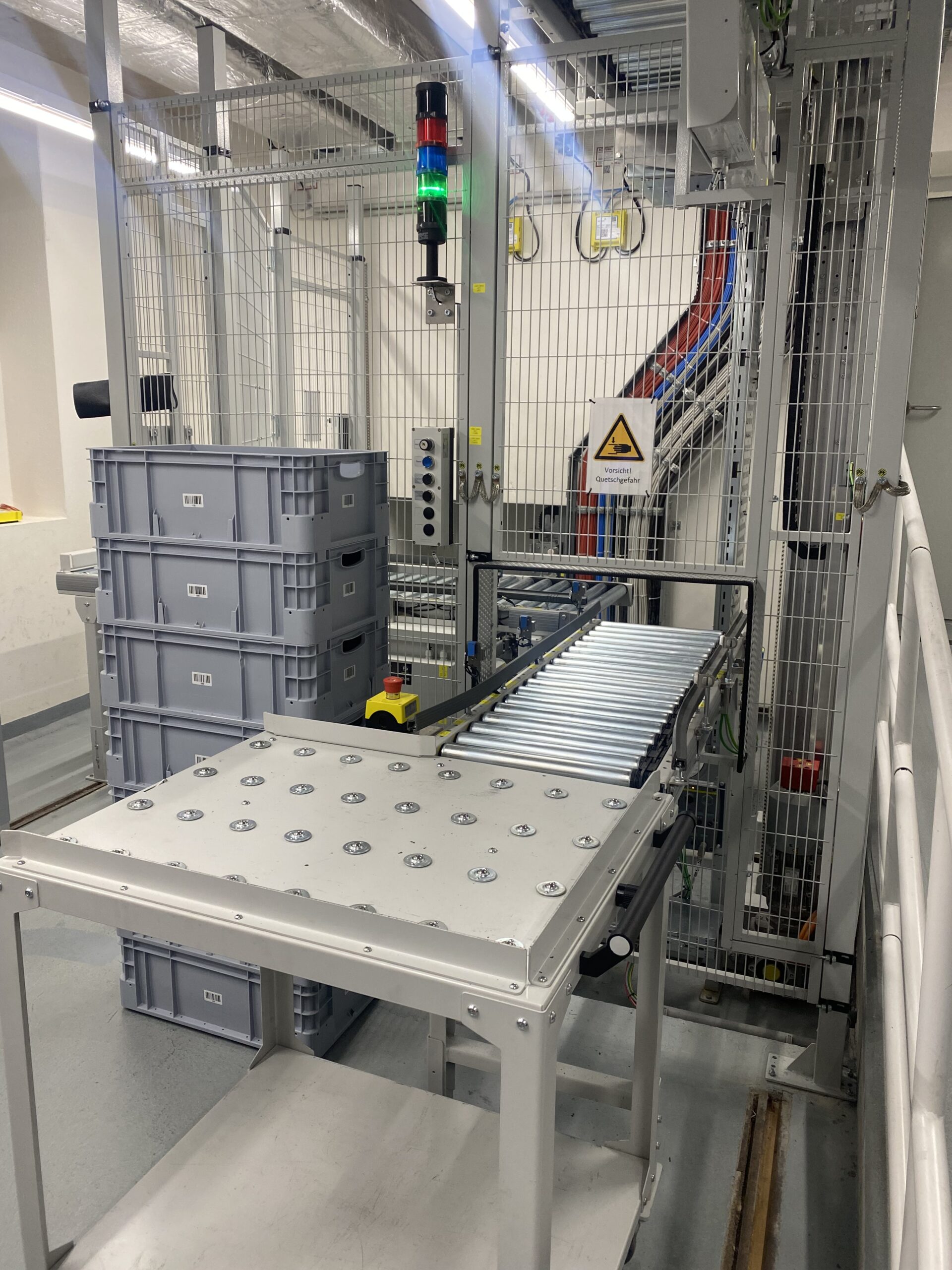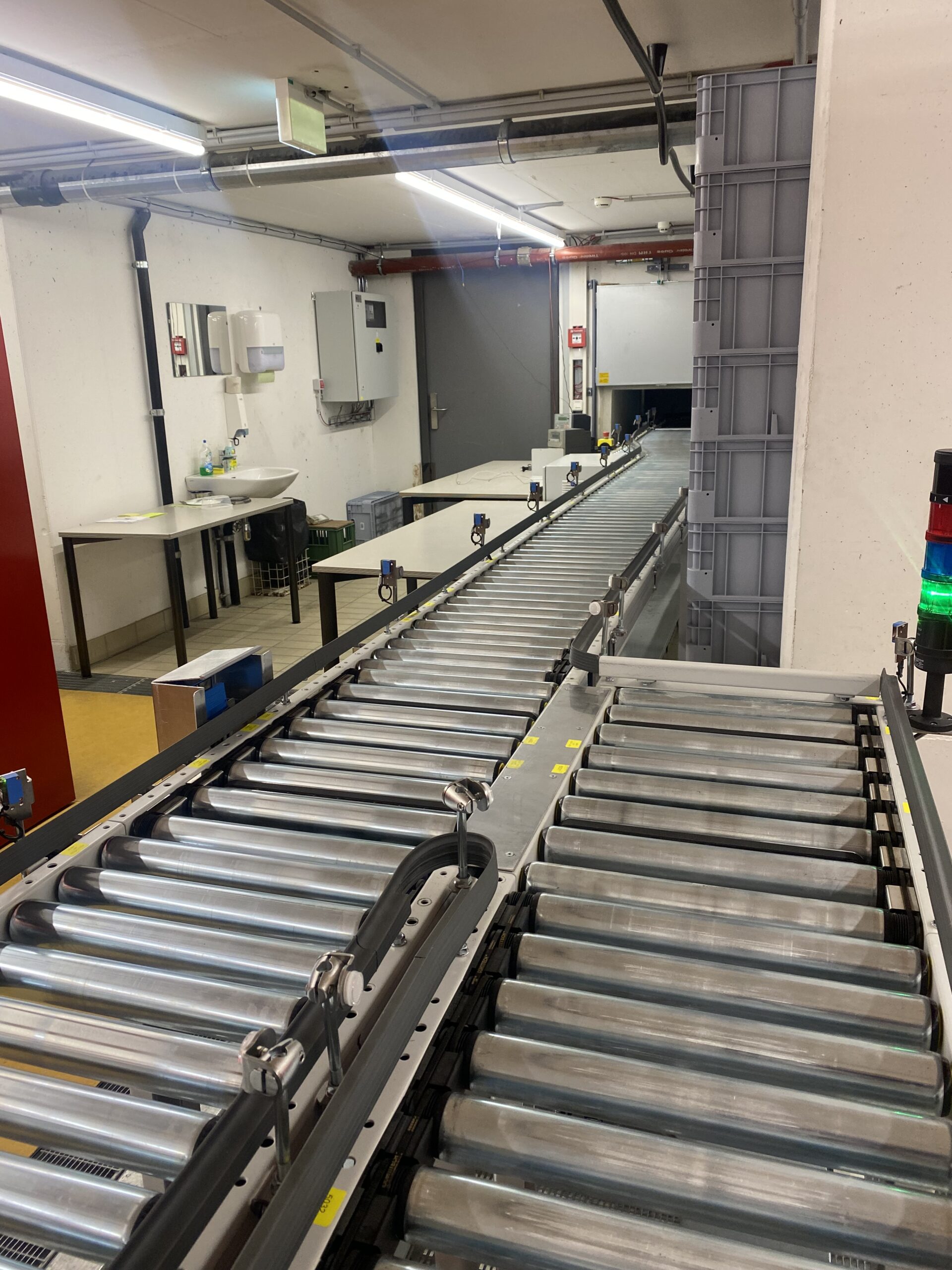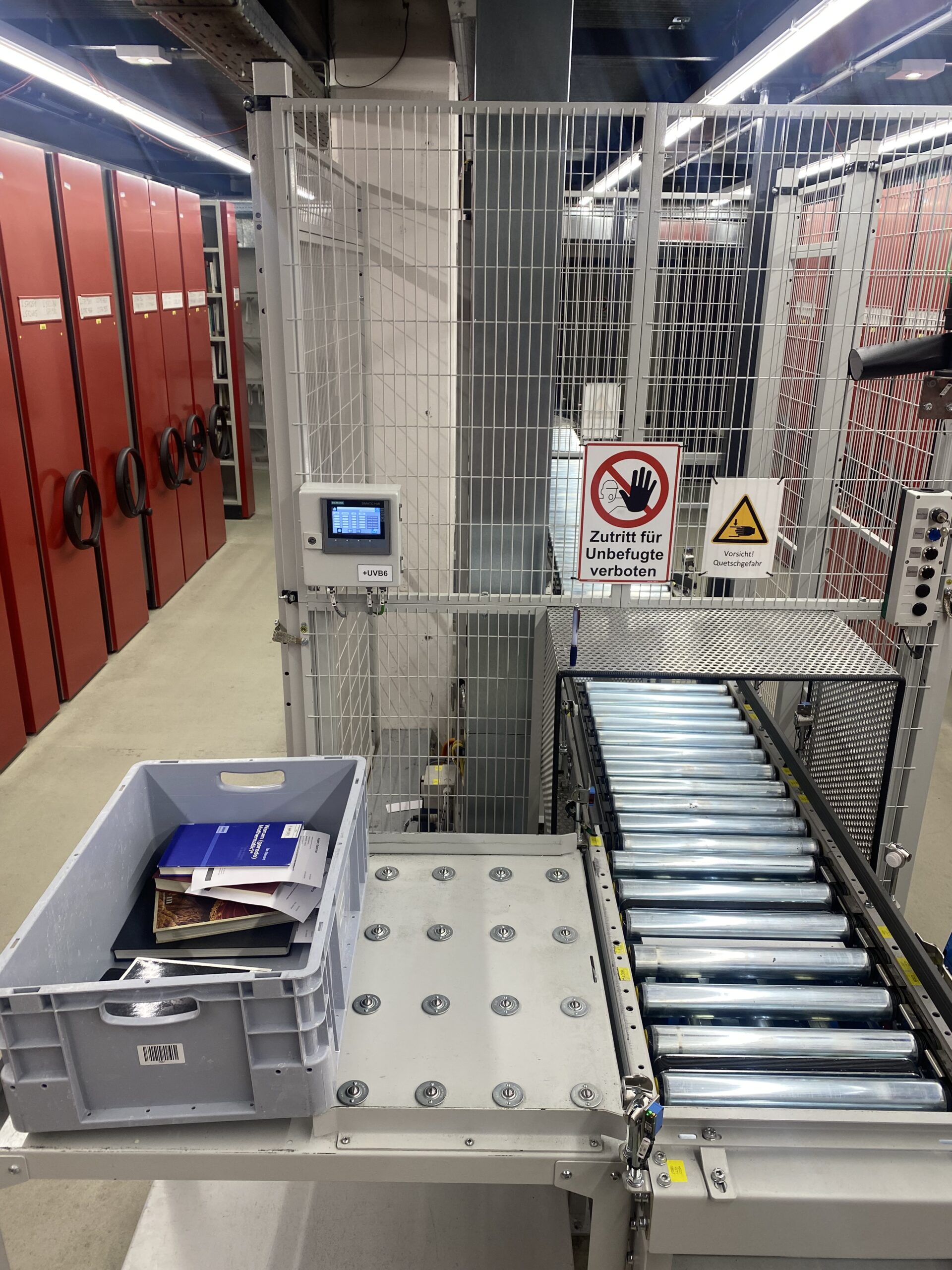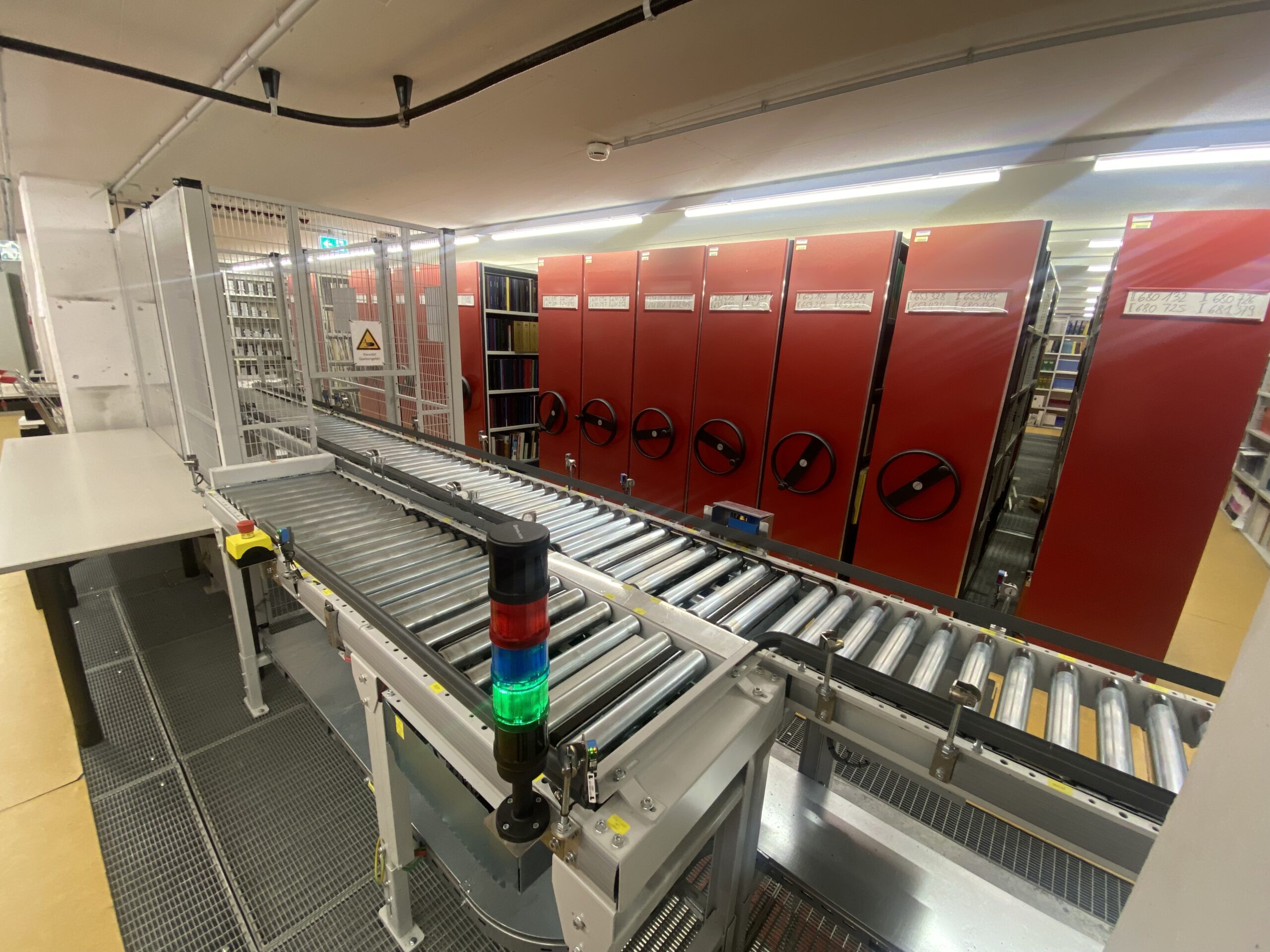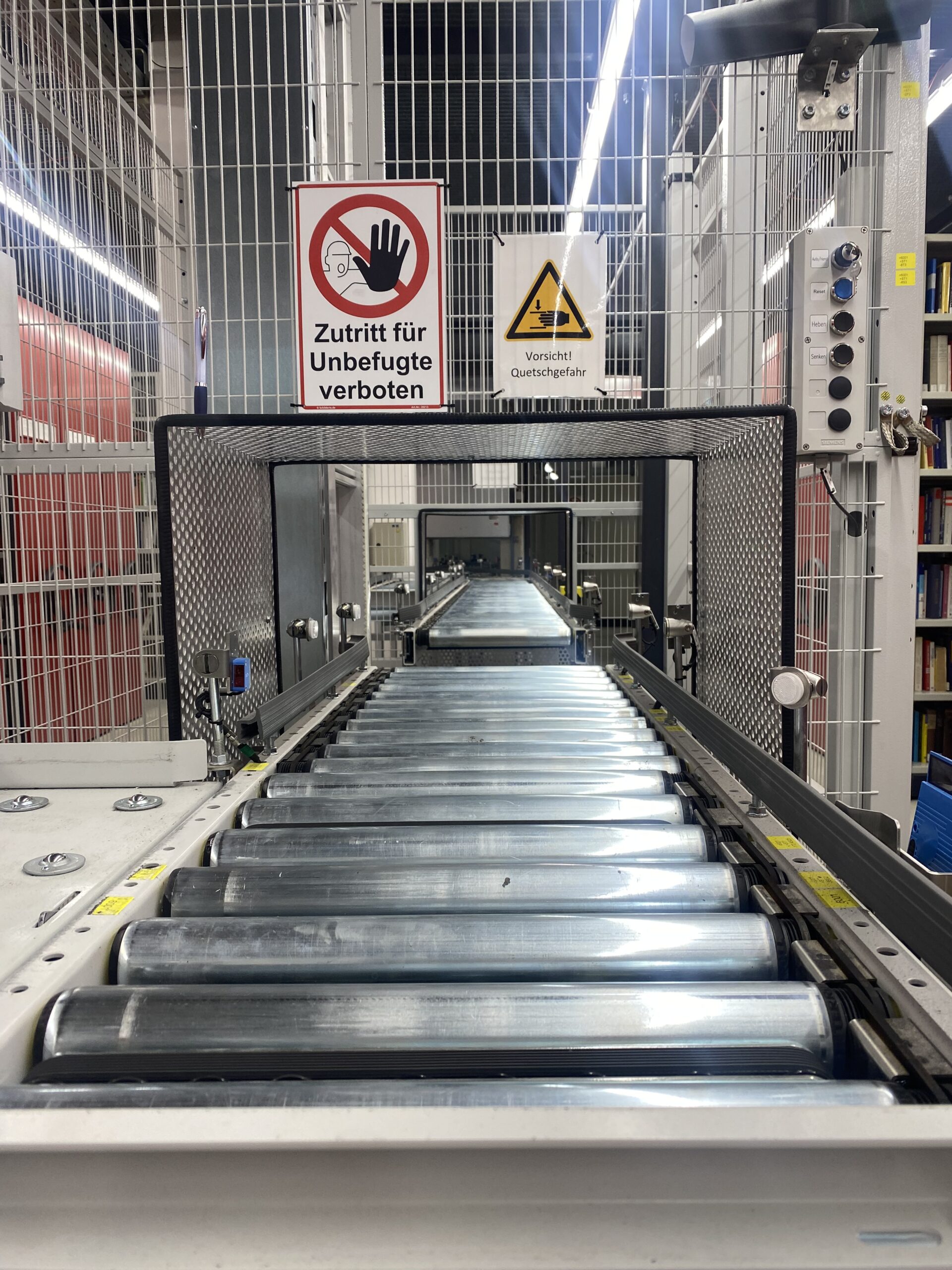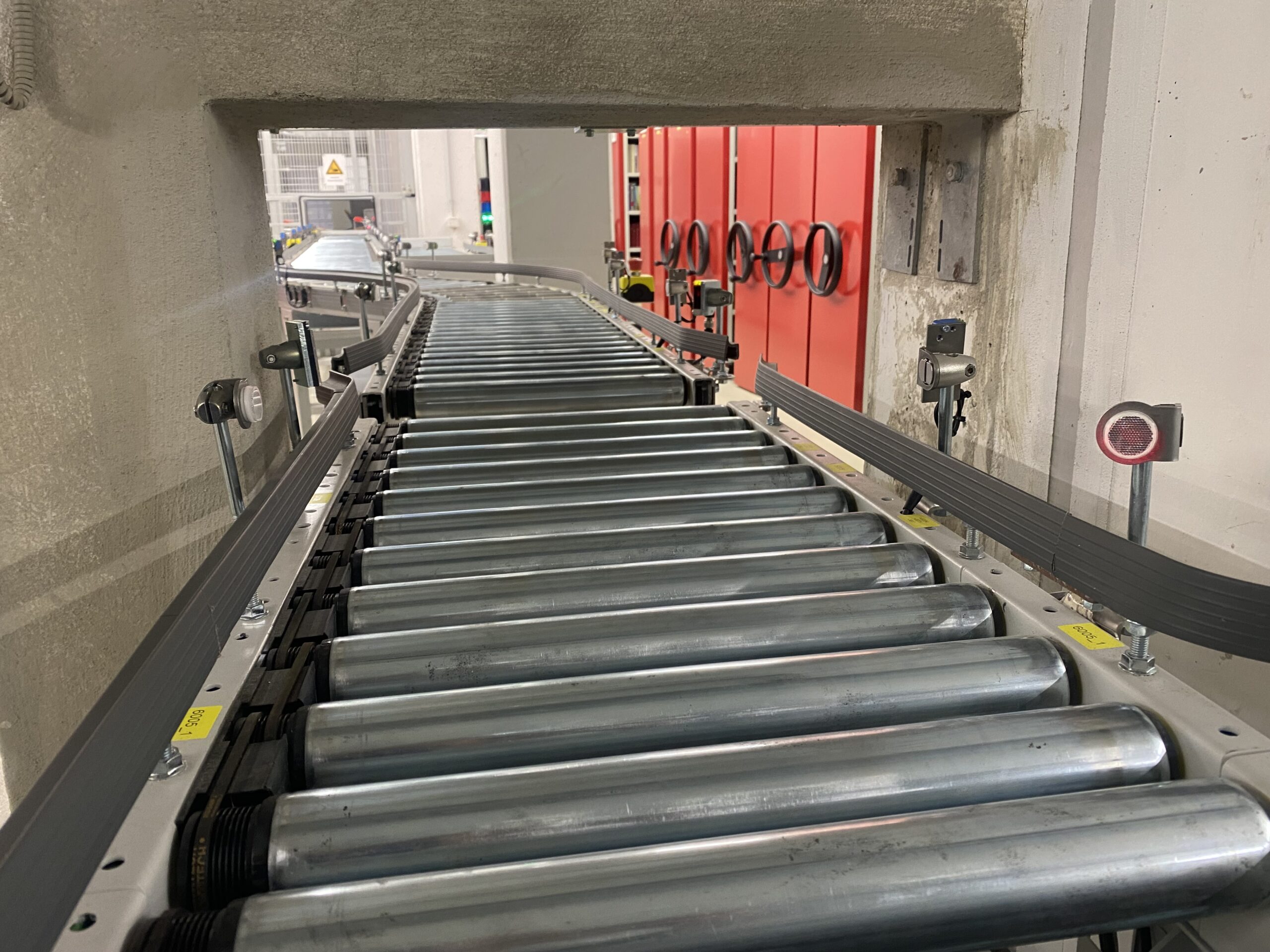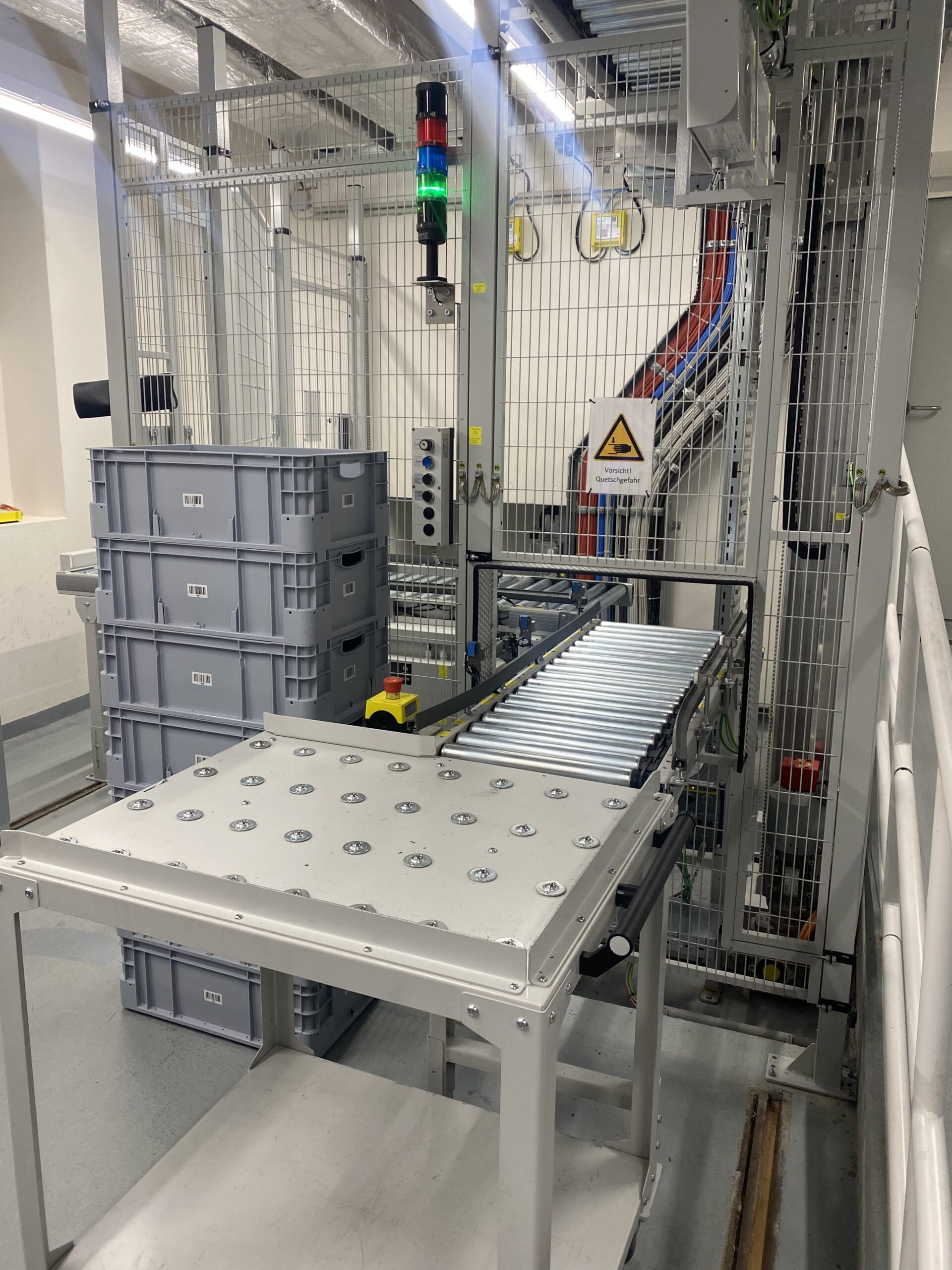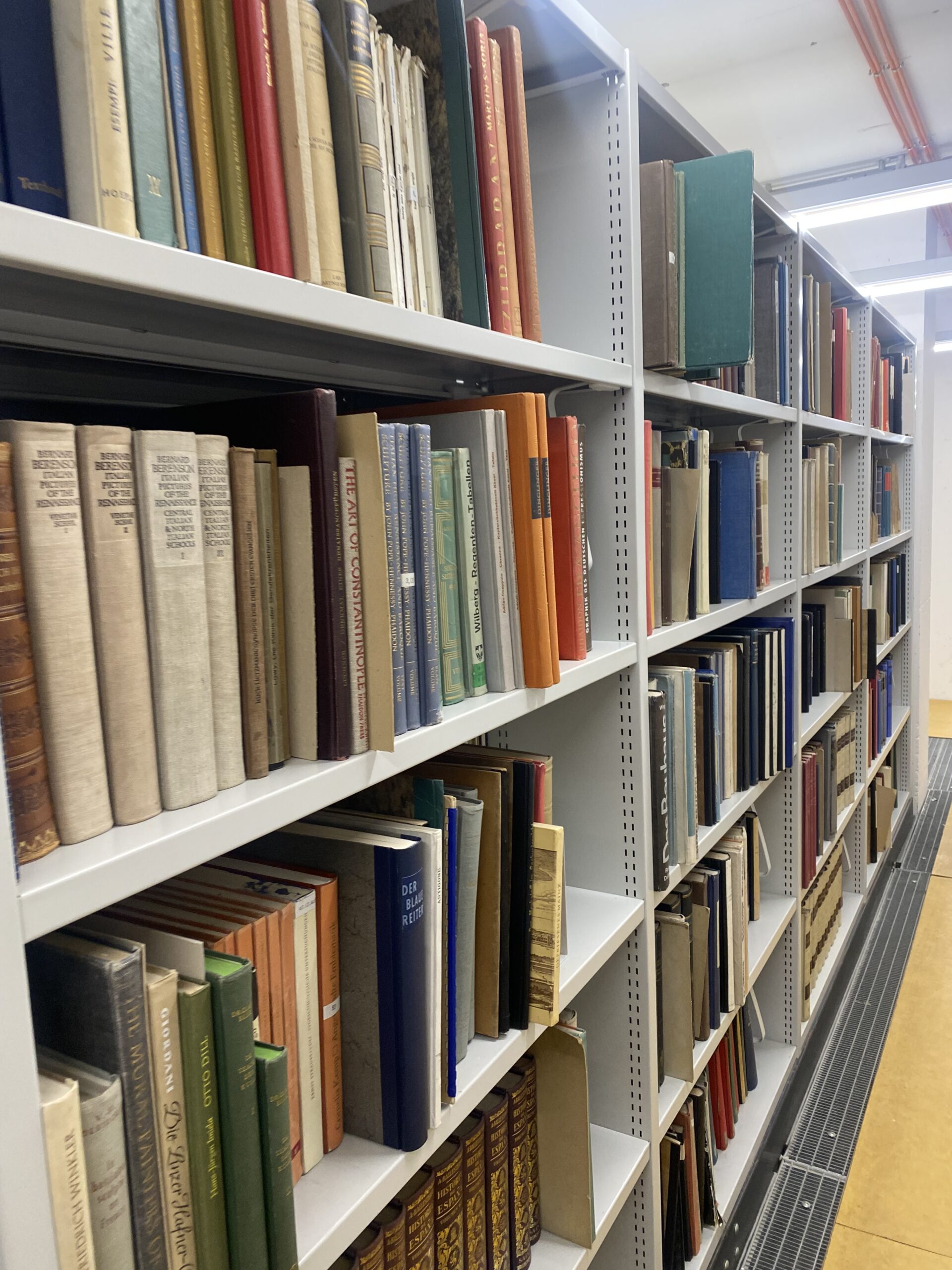BIG BUNDESIMMOBILIEN GESELLSCHAFT.
Renovation and extension of the library of the Karl-Franzens-University Graz incl. automated book conveyor system from Fb Industry automation.
SUCCESS STORY
BIG BUNDESIMMOBILIEN
GESELLSCHAFT & UNIVERSITY GRAZ.
BIG – Bundesimmobiliengesellschaft develops and manages spaces in which we live and work. Spaces that open up opportunities and possibilities for people. Spaces in which ideas are developed and new paths are taken. This is where talents unfold, horizons are broadened and dreams become reality. Employees of the Bundesimmobiliengesellschaft accompany properties throughout their entire life cycle.
As one of Austria’s largest property owners, our focus is on public infrastructure, which includes school and university buildings and specialist properties, but also office and residential properties: The portfolio includes around 2,000 properties and plots of land with a fair value of almost EUR 17 billion. Our largest tenants include the Federal Ministry of Education, Science and Research, the Austrian universities and the Federal Ministries of the Interior and Justice.
- Properties
- Vienna, Austria (= client) and/or Graz, Autria (= contract location)
- Automated book transport using reversible container conveyor technology for the library of the Karl-Franzens University of Graz following the award of the public project tender with the best bidder principle.
INITIAL SITUATION.
During the realisation of the construction project “Renovation and extension” of the library of the Karl-Franzens University of Graz”, the section of the library built in the 1970s created an obstacle to this important urban development. The historic library building has been transformed over several construction phases from the original clarity of its symmetrical late-19th century layout to a complex conglomerate of different room sequences. The building as a whole therefore lacks clarity and openness, which is why it no longer meets the requirements of a contemporary library building for the campus.
RENOVATION WORK ON THE HISTORIC LIBRARY BUILDING.
Various measures were undertaken to restore the historical, symmetrical and ring-shaped building structure around the reading room:
- Dismantling of later additions.
- Extension of the historic book storage area.
- Transformation of the two-floored suspended beam structural principle into an open meeting and reading room for the whole campus.
LANDMARKED BUILDING AS A SPECIAL PROJECT FEATURE.
The renovation and extension measures will expose the historic building and restore parts of its original façade. This will clearly separate new building sections from the landmarked parts of the building. The function of the historic reading room will also be preserved and its central position strengthened.
DOWNLOAD CASE STUDY NOW.
PROJECT FRAMEWORK CONDITIONS.
An official tender was conducted to find the right project partner to implement the new automated book conveyor system within the overall project. Fb Industry Automation’s concept was selected as the best tenderer over all other bidders. Their innovative approach included the planning, installation, commissioning and maintenance of and instruction on the system, including fire protection equipment. All measures needed to be carried out within the confines of the existing corridors.
SPECIAL REQUIREMENTS FOR THE Fb SYSTEM.
Due to the historical features of the building, the heritage specifications and other requirements, the following factors were among those that had to be taken into account during planning and implementation.
- Tolerance limits: The deviation of the horizontals and/or verticals may not exceed +/- 2mm per metre.
- Noise protection measures: The sound transmitted by the operating system into rooms to be protected against noise may not exceed a peak value of 25DB(A).
- Safety shut-down: Safety devices must be provided to switch off the drive and control system in the event of any overrunning of the stops or other deviations from normal operation.
- Energy efficiency: The system should have very low energy consumption.
- Transport containers: Transportation must be in suitable containers with a maximum conveying weight of approx. 10-35kg per piece.
- Manual manipulations: All handling by library staff must correspond to the amount of manual effort normally required.
- Routing of the conveyor system: The necessary routing includes both horizontal and vertical sections.
- Destination control and prioritisation: The system is controlled electronically by tagging the containers (e.g. scanning) to individually assigned destination stations. Book issue has priority over returns. The issue and return devices must be designed in such a way that they can be used by three people without obstructing each other.
- Common book sizes:The following book sizes must be accommodated in the selected containers without overhang:
- Category 1: 35/20cm
- Category 2: 35/25cm
- Optional: Category 3: 35-45/25-30cm
- Delivery volume: Average conveying volume is 1,200 +1,200 (issues/returns) books per day.
- Operating hours: : 7am – 6pm
- Security: The system must comply with all employment law regulations. Employees must be able to operate it without personal protective equipment (PPE). In addition, the system must be able to be operated safely by normally trained university staff after simple instruction.
- Maintenance: Full maintenance of the installed system incl. spare parts storage.
- Increased throughput.
- Easy handling of high loads.
- Reversible operation.
- Low maintenance.
- Short reaction time
- Buffering options.
- Decoupling of automated and manual handling.
- User-friendly operation.
- Decentralised visualisation possible.
- Intralogistics complete solution from a single source.
Further details on the specific implementation of the automated book conveyor system in the library at the University of Graz can be found in our Case Study.
ANDREAS AUER
Project Manager, Fb Industry Automation
“Constructing the intralogistics system at the same time as the building renovation meant that we were constantly faced with new challenges. These we were able to overcome extremely well thanks to our in-house flexibility (flat hierarchies, short decision-making channels).”
FURTHER CASES.
LEHNER electronics – Automated Small Parts Warehouse (AS/RS)
Since its establishment in 1997, LEHNER electronics has stood for quality and reliability in the areas of cable systems and the manufacture of electromechanical assemblies.
The Fb Compact Warehouse, a tailor-made Automated Small Parts Warehouse (AS/RS) in connection with the Automed Guided Vehicles (AGV) are the heart of the new building. Thanks to the good partnership, all of the customer’s wishes and requirements could be perfectly implemented.
Nagel Maschinen- & Werkzeugfabrik GmbH – Automated Small Parts Warehouse
Find out more about the possibilities of an automated small parts warehouse with different rack heights. In order to be able to use the space available at NAGEL Maschinen- und Werkzeugfabrik GmbH in the best possible way, the Fb Compact Warehouse was individually developed and implemented. Small parts up to 120kg can now be transported automatically with shuttles and picked with maximum performance.
Individual Degree of Automation
When does which degree of automation make sense? The unparalleled flexibility of Fb Industry Automation even allows for step-by-step integration of the automation processes into the existing storage logistics. We discuss the best possible approach and the individual service phases with you, taking a customised approach to the requirements of your company.
